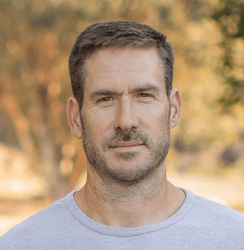If you’ve been home shopping since early 2022 when mortgage rates surged higher, you’ve likely come across the buydown.
The buydown is used to lower a home buyer’s mortgage rate, either temporarily or permanently.
It can make the mortgage payment cheaper for the first few years of the loan term, or for the entire 30 years.
These buydowns serve as an incentive to purchase a home, even if interest rates and home prices are high.
And the home builders are all-in on them, partially because they don’t want to lower their prices. And maybe because they need to offer them to move product.
Rate Buydowns Are Nice, But Might Even Be Necessary
As mentioned, the home builders are big on mortgage rate buydowns, offering them in earnest since the 30-year fixed began climbing rapidly in early 2022.
Before spring 2022, mortgage rates had been near record low levels, but once the Fed ended its mortgage-backed securities (MBS) purchasing program known as QE and starting raising the fed funds rate, conditions changed fast.
The 30-year fixed was in the 3s to start 2022, and quickly increased to around 6% by the same summer.
It eventually went as high as 8% before pulling back into the 6s.
Meanwhile, home prices continued to rise, albeit at a slower clip than previously. This clearly dampened affordability, but home builders aren’t in the business of lowering their prices.
Nor can they sit on their inventory like an individual can. They need to move their inventory.
To solve this problem, they tackled the mortgage rate piece. They did so by offering mortgage rate buydowns.
Big home builders like Lennar and D.R. Horton rely heavily upon them via their in-house lenders, Lennar Mortgage and DHI Mortgage.
For example, if the going rate for a 30-year fixed was 7%, they’d offer a buydown for the first few years to make it more palatable.
A common 3-2-1 buydown offers an interest rate 3% lower in year one, 2% lower in year two, and 1% lower in year three.
This means 4%, 5%, 6%, and eventually 7% for the remainder of the loan term. While this could entice home buyers who could afford the 7% rate, there was a catch.
Borrowers still need to qualify for the mortgage at the actual note rate, which in my preceding example is 7%.
In other words, if the borrower couldn’t actually afford to buy the home with a 7% mortgage rate, using the lender’s max DTI calculations, they wouldn’t be able to purchase the property.
As such, builders needed to get even more aggressive and ensure that note rate was lower too, not just the teaser rate in years 1-3.
Many Builders Offer Combined Temporary and Permanent Rate Buydowns
While the savings of a temporary rate buydown are a good incentive to buy a home, they are just that.
If you want to actually qualify more home buyers, you need to get the note rate down for the entire loan term.
This note rate is what banks and mortgage lenders use to qualify home buyers. Simply put, they can’t use a rate that’s only in place for a few years.
That could put the borrower in a pickle once the rate increases back to the actual, higher rate.
So they qualify them at the real mortgage rate, somewhat similar to short-term adjustable-rate mortgages, which can also adjust higher once the initial period ends.
Knowing this, home builders have begun offering combo temporary/permanent buydowns to solve both the affordability piece and the incentive piece.
Using my same example from above, the builder would maybe offer a 2/1 buydown instead with a permanent buydown attached.
For example:
Year 1: 3.875% rate
Year 2: 4.875% rate
Years 3-30: 5.875% rate
Now, the lender can qualify the borrower at the 5.875% rate, since that’s the highest the rate will go during the entire 30-year loan term.
And that could be the difference between an approved mortgage and a declined one.
Lenders Are Required to Use the Note Rate for Mortgage Qualification
Note that both Fannie Mae and Freddie Mac require lenders to qualify the borrower at the note rate.
In the case of a temporary buydown, “the lender must qualify the borrower based on the note rate without consideration of the bought-down rate,” per Fannie Mae.
If it’s a permanent buydown, “qualification is based on the monthly housing expense-to-income ratio calculated using the monthly payment at the permanent bought-down note rate,” per Freddie Mac.
This might explain why many big home builders today are offering the temporary buydown AND the permanent one.
They pique buyers’ interest with the low temporary rate, and make sure they qualify for the mortgage with the permanent bought-down rate.
In the process, they can keep unloading their inventory and ensure prices don’t fall, despite eroding affordability.
The home builders keep winning despite those 7% mortgage rates. And arguably home buyers get a decent payment too.
Just pay attention to that purchase price if you’re a buying a newly-built home to ensure the low rate isn’t baked in.
